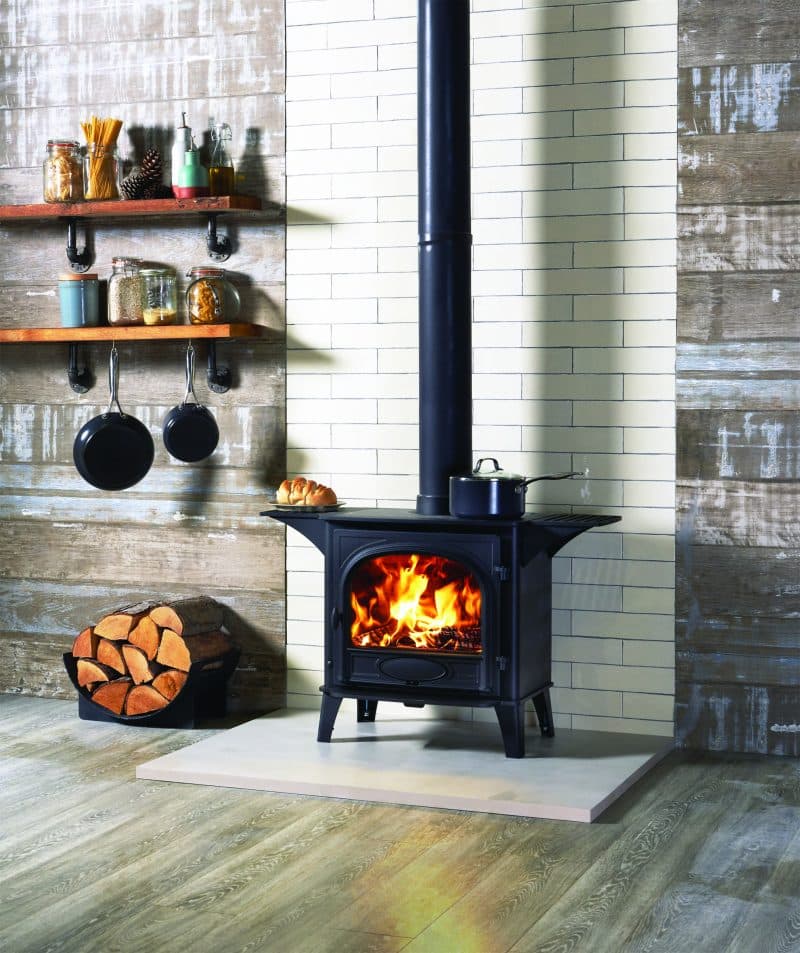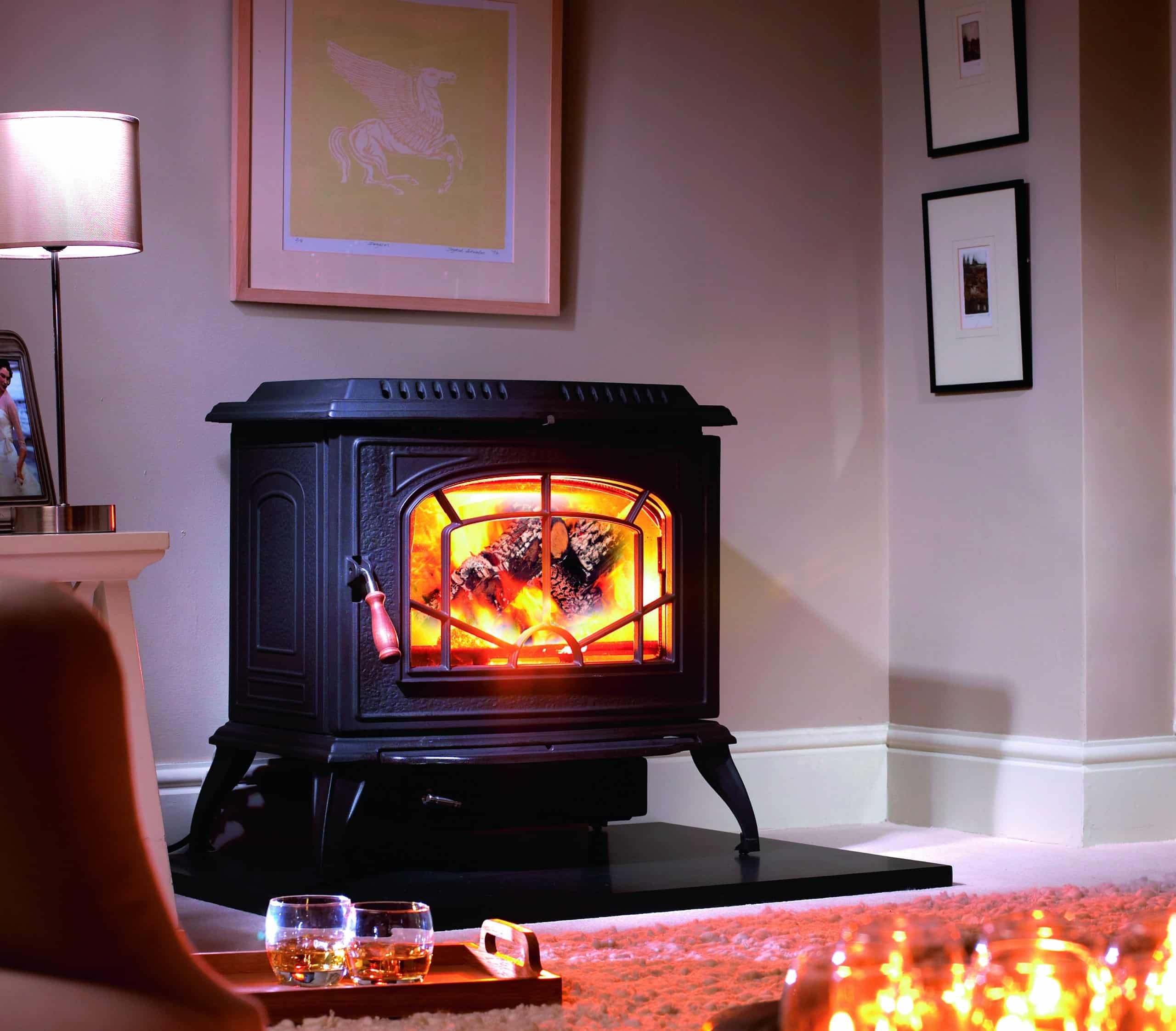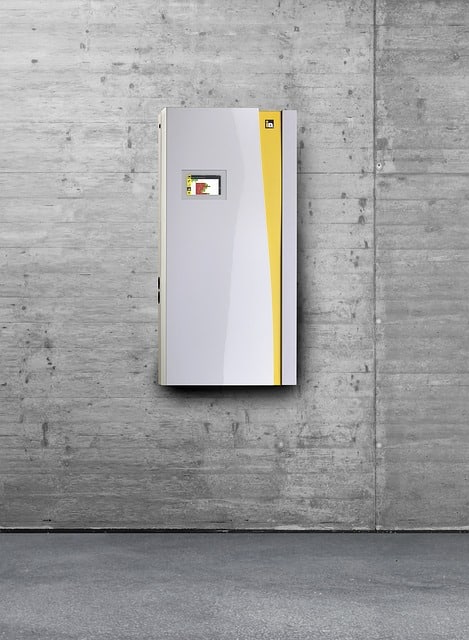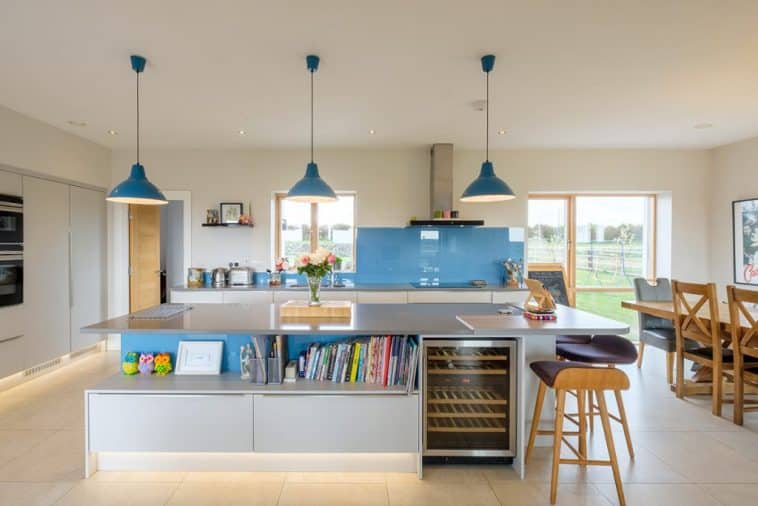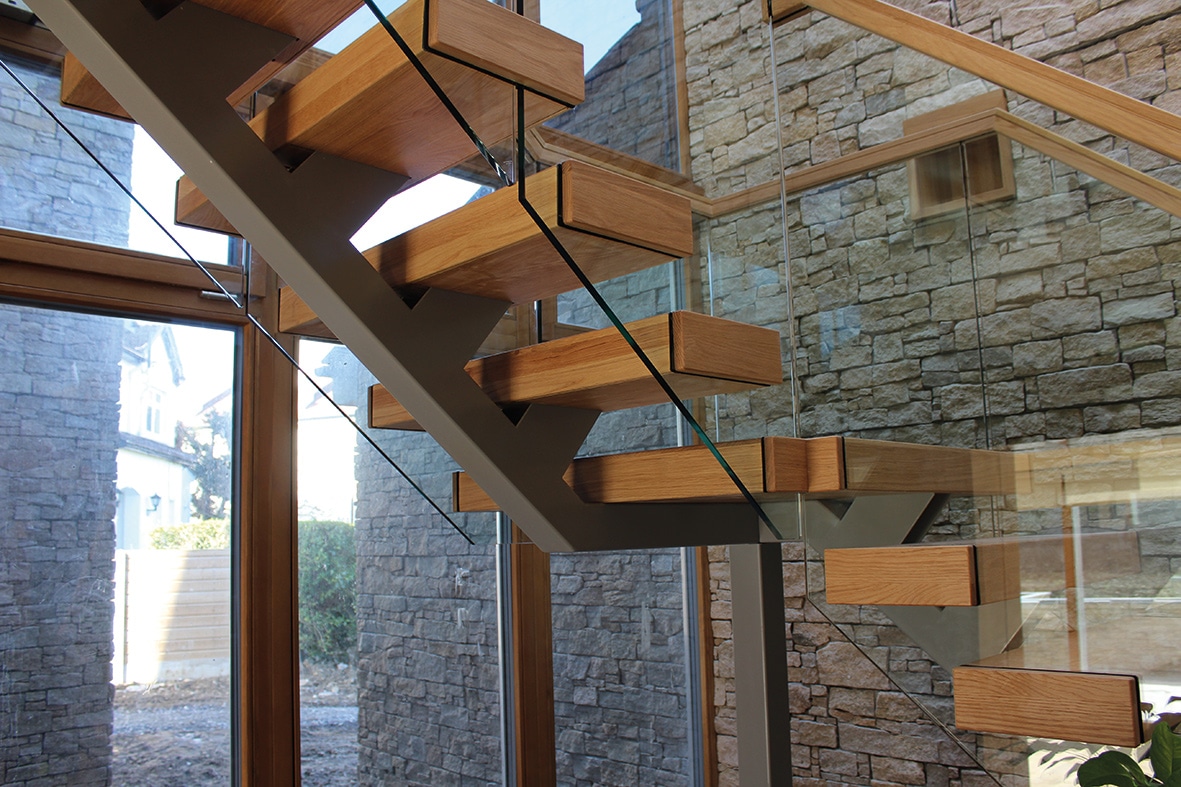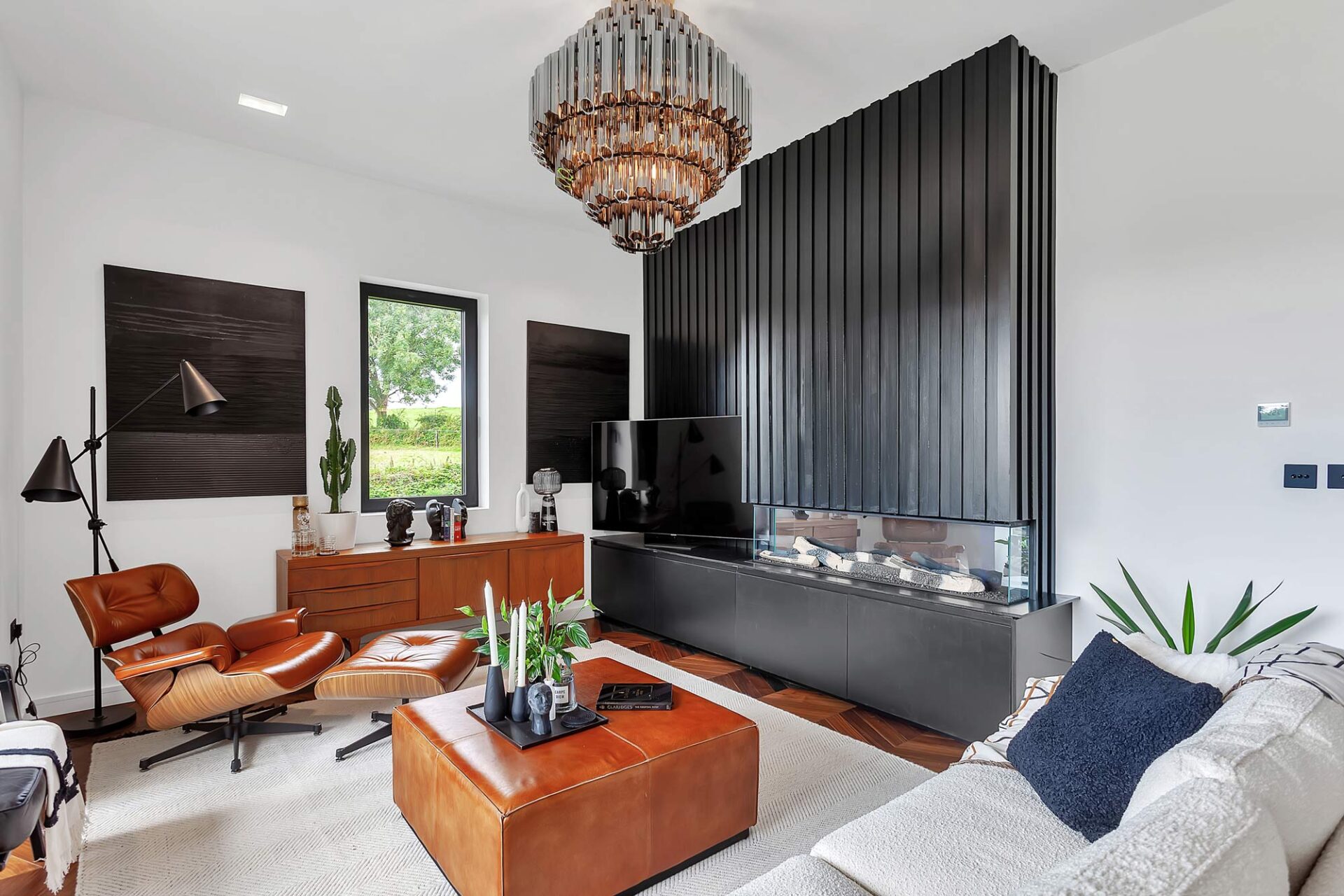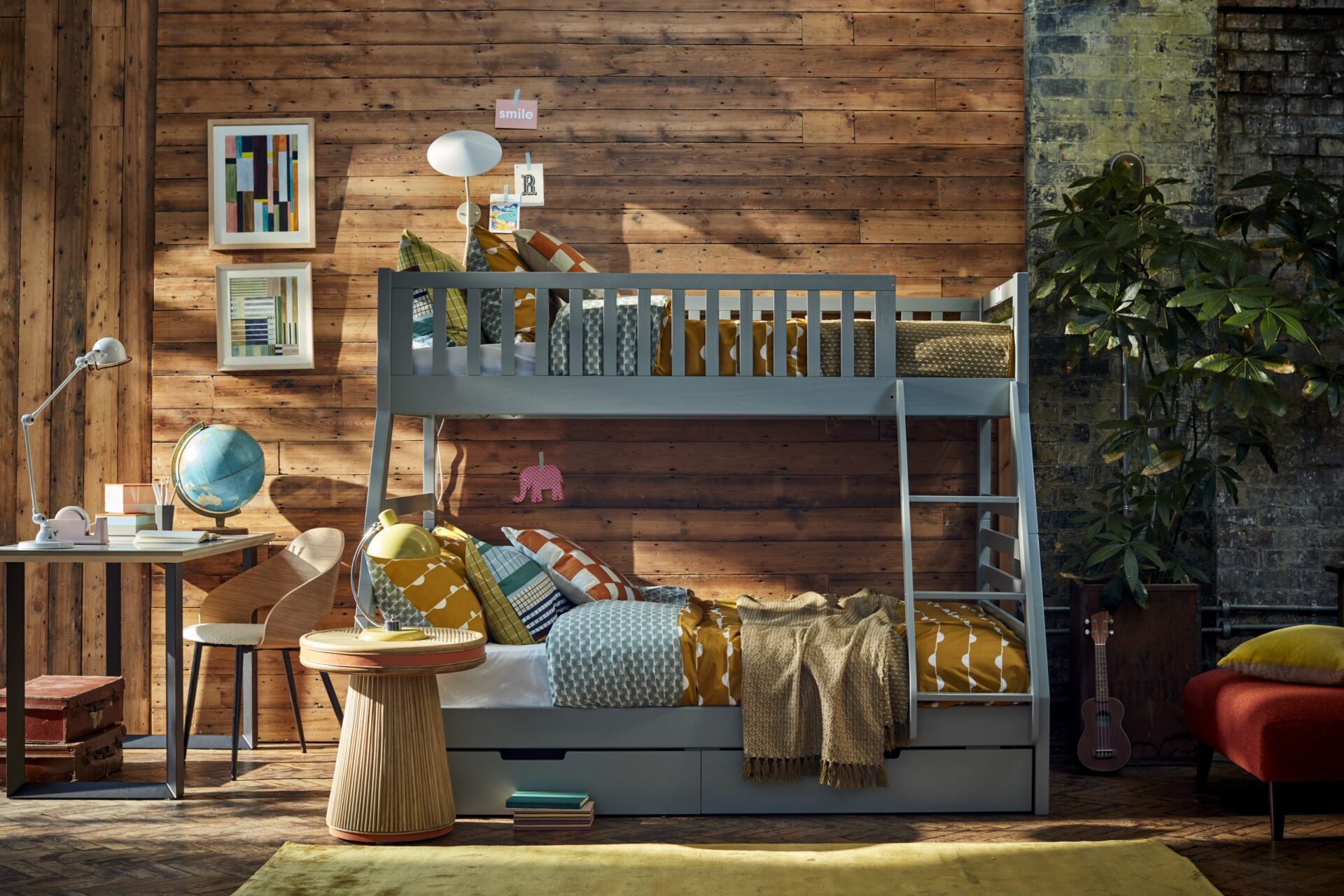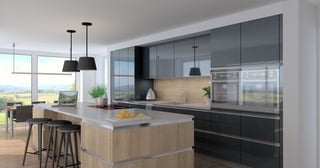The modern solution to having a fire in the home without the massive heat loss of an open fire.
Wood-burning and other fuelled home stoves have become very popular in our houses in recent years, as people realise the problems with open fires and the associated ventilation heat losses, even when not in use.
Home stoves allow greater control of the burning rate and thus heat output and are more efficient, making better use of the fuel. Heating up the body of a stove allows it to radiate heat from all sides, providing a more even heat distribution. And, of course, they come in a wide range of styles that make a contribution to the interior décor of a room.
There are also convection stoves which are barely warm to the touch, whereby the heat is not conducted to the casing and thus does not radiate into the room. Of double skin construction, these are designed to heat air flowing between the skins which then exits from the front of the stove at the top.
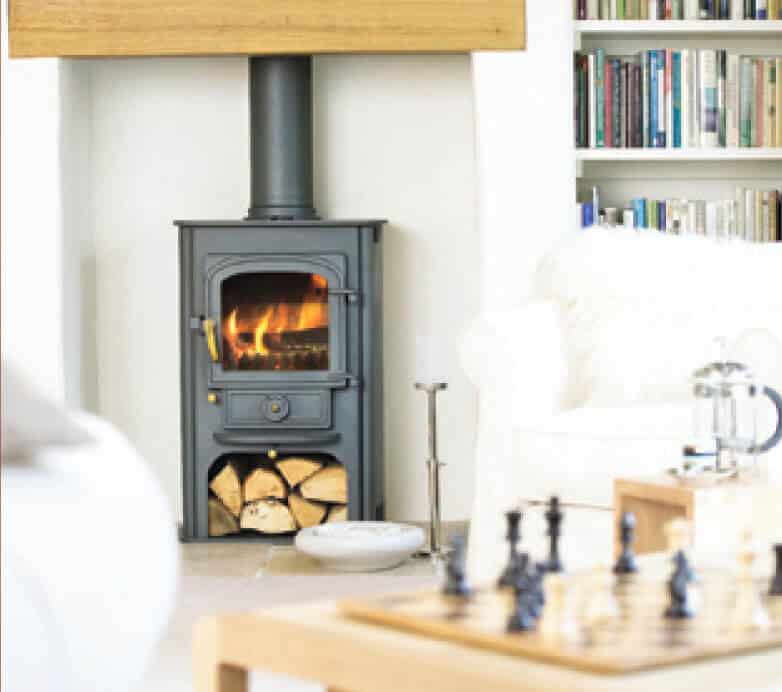
Convection stoves may actually heat a room faster than radiation types and may also be specified in cases where there are non-fireproof surfaces around it – but you should know what you are getting and whether it is what you want.
Home Stoves Regulations
There are regulations governing the safe installation of home stoves, in particular regarding combustion air (avoidance of carbon monoxide risk), construction and location of chimneys/flues, provision of non-combustible adjacent surfaces (including minimum dimensions for hearths) and prevention of smoke emission if applicable.
In NI check with your local council Building Control service to see what regulations apply in your case and if an application needs to be made. In NI Technical Booklet L of the regulations covers installation of stoves and, in ROI it’s Part J. Whether or not your situation falls under the regulations follow them as they have been drawn up with safety in mind.
The stove must sit on a non-combustible surface which must extend a minimum distance to the sides and front. Regulations may vary, though 225mm is recommended at the front when installed free-standing in a room (500mm if in a conventional fireplace with jambs either side) and at least 150mm at each side.
Check that the floor can bear the weight of the stove and, possibly, a short length of stovepipe – though the flue will have its own structural support when correctly installed.
If installing in an existing chimney then a flue liner can be inserted, connected at the top to a pot-hanging cowl (just what it sounds like) and at the bottom to the stove-pipe. Ensure a good airtight fit to avoid leakage of combustion gases.
Discharging straight into the chimney, even if well-lined, is not recommended as it can lead to problems starting the stove due to poor up-draught (the chimney will be colder than the flue), as well as condensation of flue gases and dripping of acidic condensate into the stovepipe and stove body.
The requirement for a permanent room vent for combustion air would be
incompatible with low air permeability and also mechanical ventilation heat recovery systems.
However, in a new build, a dedicated pipe (e.g. 100mm non-combustible pipe), connected to the outside and running under the floor can be terminated at the hearth and, depending on the model, connected directly into the stove.
With an existing house you may need to be a bit more inventive, though your air permeability is likely to be higher anyway. Some stove manufacturers have started offering ‘concentric’ flue systems, which usually consist of an inner layer for the exiting flue gases and an outer layer for incoming combustion air for the appliance, with an insulation layer in between – similar to a balanced flue on a modern fossil-fuel fired boiler.
Home Stoves Sizing
Naturally if the stove is too small, it will not be so useful but over-sizing the stove is also a risk as they are not instantly controllable in terms of heat output. There are various rules-of-thumb calculators online that take into account the size and insulation standards of the room and a given stove manufacturer/supplier may also be able to help. It is safer to slightly undersize a stove and run it hard when necessary, as the combustion will be more efficient.
Oversized home stoves run in ‘slumber’ mode will produce products of incomplete combustion including carbon monoxide, sooty and tarry deposits and increase the risk of condensation of acidic gases in the flue.
Be wary of figures in kW which may be given in a range (say 3kW to 6kW) as these may depend on the type of fuel to be used. Also, figures may be given for fuel input rather than heat output.
Consider too if you want the stove to heat hot water as well as the room. In that case you need a model with a back-boiler. Of course the stove will need to be sized to allow for hot water production as well as space heating.
You will also need appropriate plumbing connections, pipework to a hot water cylinder (or thermal store) and, generally, safety valves, pump, etc. Back boilers can also, with a large enough stove, run a number of radiators.
Home Stoves Fuel Types
Wood-burning (biomass) stoves can be of log-burner or pellet type. The latter are more controllable and can be automated (electric ignition), thermostat-controlled and with automatic fuel feed. Also, ash production is low meaning less intervention and mess.
However, the pellets are more expensive than logs and require storage conditions with more closely-controlled temperature and humidity. Logs have all the opposite advantages and disadvantages: cheaper, though more intervention (lighting, re-fuelling, ash removal).
If burning logs make sure they are properly dried as otherwise the heat output will be reduced and, in extreme cases, they may be hard to light. The best way to season logs is to leave them outside for at least a year, covered, though in a location where the wind can blow through them.
Some multi-fuel stoves can burn a variety of other fuels too, including coal (of the various types) and turf – though both of these raise environmental issues in terms of pollution and depletion of resources/habitats. If your situation is not suitable for a wood-burner (for example, local council restrictions on smoke emissions, lack of options for combustion air and/or flue arrangements) then a gas-fired type might be an option.
Gas-fired stoves are available in various forms, from wood-burner lookalikes, to flue-less types that deal with combustion products via a catalytic converter and also require no separate combustion air – and various configurations in between.

